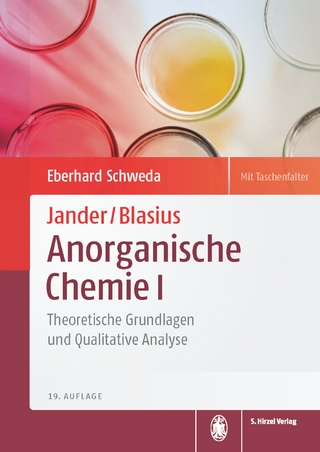
Modern Aspects of Electrochemistry
Kluwer Academic / Plenum Publishers (Verlag)
978-0-306-42954-5 (ISBN)
- Titel ist leider vergriffen;
keine Neuauflage - Artikel merken
1 Transport Models For Ion-Exchange Membranes.- I. Introduction.- II. Solution of Ion-Exchange Problems Using the Nernst-Planck Equation for Ion Transport.- 1. Phenomenological Equations.- 2. Literature Review of Electrokinetic Models Employing a Membrane Microstructure.- 3. Specific Adsorption.- 4. Variation of the Dielectric Constant and Viscosity and Hydration Effects.- 5. The Structure of Ion-Exchange Membranes.- 6. Macroscopic Approaches to the Modeling of Ion-Exchange Membranes Using the Nernst-Planck Equation.- III. Transport Models Based on Irreversible Thermodynamics.- 1. Development of Membrane Flux Equations.- 2. The Kedem-Katchalsky and Spiegler Transport Models.- 3. Simulation of Membrane Transport Processes.- IV. Experimental Methods for Membrane Analyses.- 1. Equilibrium Experiments.- 2. Transport Experiments.- 3. Indirect Methods for Determining the Binary-Interaction Parameters.- V. Conclusions.- Notation.- References.- 2 Iron and Its Electrochemistry in an Active State.- I. Introduction.- 1. Corrosion Potential and Corrosion Current.- 2. Methods for Measuring Corrosion Rates.- II. Hydrogen Evolution Reaction on Iron.- 1. Kinetic Parameters and Reaction Mechanisms.- 2. Hydrogen Evolution Reaction and Iron Deposition.- 3. Experimental Measurements of pH near the Electrode Surface.- 4. Absorption of Hydrogen and Hydrogen Embrittlement.- III. Electrochemical Reduction of Oxygen and Its Influence on the Anodic Dissolution of Iron.- IV. Cathodic Deposition of Iron.- V. Anodic Dissolution of Iron.- 1. Acid Solutions.- 2. Transient Phenomena.- 3. Influence of Anions on Dissolution Kinetics.- 4. Neutral Solutions.- 5. Alkaline Solutions.- VI. Anomalous Dissolution of Iron.- VII. Conclusions.- References.- 3 Theory of the Effect of Electrodeposition at a Periodically Changing Rate on the Morphology of Metal Deposits.- I. Basic Definitions.- 1. Reversing Current.- 2. Pulsating Current.- 3. Alternating Current Superimposed on Direct Current.- 4. Pulsating Overpotential.- II. Surface Concentration in the Periodic Condition.- 1. Mathematical Model.- 2. Capacitance Effects.- 3. The Validity of the Mathematical Model.- 4. The Case of Pulsating Overpotential.- 5. Reversing Current in the Second Range.- III. Current Distribution on a Microprofile.- 1. Amplification of Surface Irregularities in Electrodeposition at Constant Deposition Rate.- 2. Amplification of Surface Irregularities in EPCR in the Millisecond Range.- 3. Amplification of Surface Irregularities in Electrodeposition for Reversing Current in the Second Range.- 4. The Effect of Deposition Current Density.- IV. Maximum Deposition Rate.- 1. Maximum Deposition Rate in Electrodeposition at a Constant Rate.- 2. Maximum Deposition Rate in EPCR in the Millisecond Range.- 3. Maximum Deposition Rate in Electrodeposition by Reversing Current in the Second Range.- V. Prevention of Formation of Spongy Deposits.- VI. Current Distribution on a Macroprofile.- VII. Surface Film Formation.- VIII. Energetic Aspects.- IX. Conclusions.- Notation.- References.- 4 Theory and Applications of Periodic Electrolysis.- I. Introduction.- II. Effect on Morphology of Electrodeposited Metals.- 1. Rectangular-Pulse Electrolysis.- 2. Periodic-Reverse Electrolysis.- 3. Sinusoidal (Symmetric and Asymmetric) Electrolysis.- III. Theoretical Aspects of Periodic Electrolysis.- 1. Mass Transfer.- 2. Current Distribution.- IV. Conclusions.- Notation.- References.- 5 Electrocatalytic Properties of Carbon Materials.- I. Introduction.- II. Physicochemical Properties of Carbon Materials.- 1. Crystallochemistry and Electronic Structure.- 2. Surface Chemistry.- III. Electrochemical Reactions on Carbon Materials.- 1. The Chlorine Reaction.- 2. The Oxygen Reaction.- 3. The Hydrogen Peroxide Reactions.- 4. The Hydrogen Evolution Reaction.- 5. Electrooxidation of Sulfur Dioxide.- 6. The Reactions of Organic Compounds.- IV. Chemically Modified Electrodes.- 1. Methods of Modifying Carbon Materials.- 2. The Mechanism of Electrocatalytic Reactions.- V. Conclusions.- References.- 6 Spin-Dependent Kinetics in Dye-Sensitized Charge-Carrier Injection Into Organic Crystal Electrodes.- I. Introduction.- II. Theoretical Considerations.- III. Experimental Aspects.- IV. Main Results.- 1. Detection of the HFM on the Surface.- 2. Origin of the HF Effect on the Surface.- 3. Decrease in the Spin Correlation Time with Increasing Electric Field, E.- 4. Decrease in the Spin Correlation Time through Recombination Centers.- V. Summary.- References.
| Erscheint lt. Verlag | 31.3.1989 |
|---|---|
| Zusatzinfo | 37 black & white illustrations, biography |
| Verlagsort | Dordrecht |
| Sprache | englisch |
| Themenwelt | Naturwissenschaften ► Chemie ► Analytische Chemie |
| Naturwissenschaften ► Chemie ► Physikalische Chemie | |
| ISBN-10 | 0-306-42954-3 / 0306429543 |
| ISBN-13 | 978-0-306-42954-5 / 9780306429545 |
| Zustand | Neuware |
| Haben Sie eine Frage zum Produkt? |
aus dem Bereich


